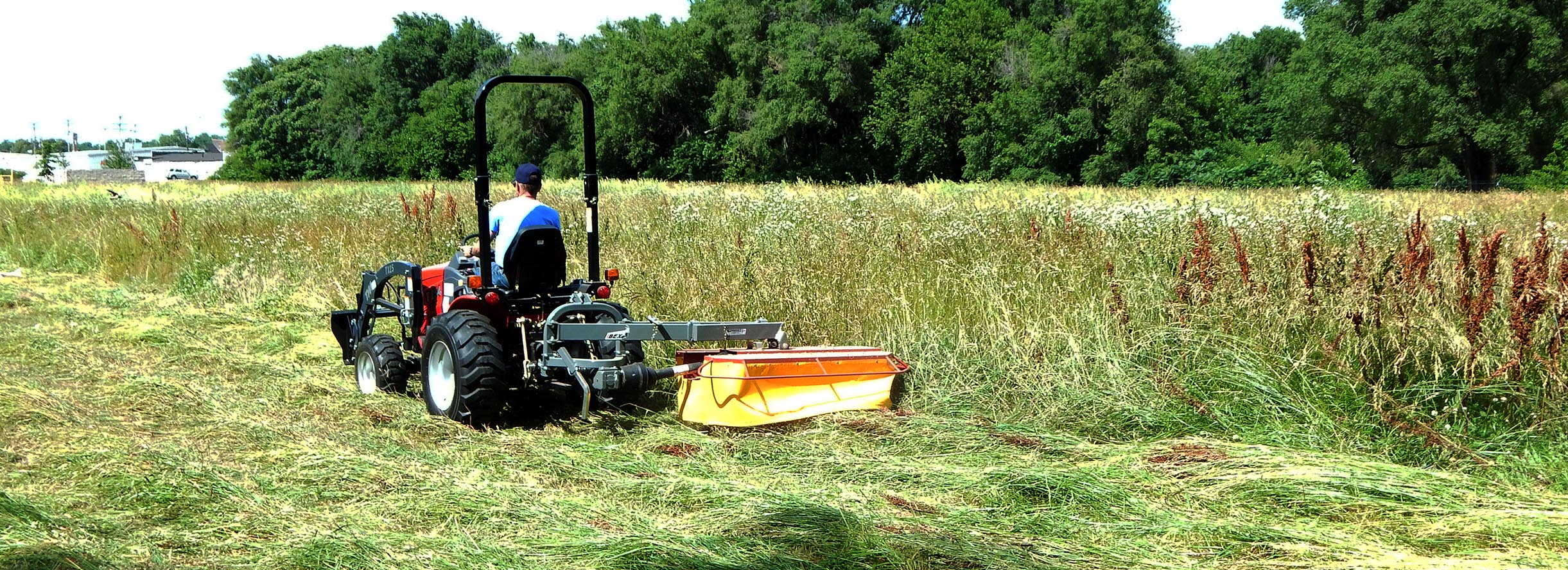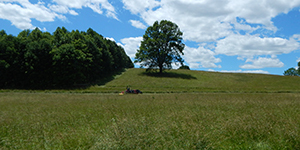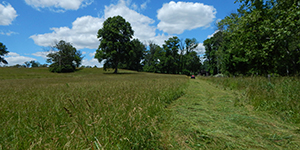Preparing for the Hay Season

Windows for perfect hay baling conditions can be few and far between especially in the fickleness of late spring. For this reason, it is best to begin preparing for the hay season at least a month before that first cutting is due. In this blog we’ll discuss the steps to be taken to ensure your equipment, fields, and barns are ready when the hay-making stars align.

Technically, the brunt of the spring baling prep should have been done in the fall. If you heeded the advice of our past blogs, you cleaned up and repaired your equipment before storing it for the winter. Hopefully at that time you also assessed any new equipment purchases you might have been needing and made those purchases.
Since optimum conditions for first cuttings can generally be expected around May 15th in the southern US to around Memorial Day in the north, preparation for the hay season should begin at least by mid-April. However, it might be wise to make needed parts and supplies purchases before this point to avoid the inevitable late spring rush that can result in items being out of stock. Some of these purchases include baler twine or net, belts, mower blades, along with rake, tedder, and baler tines. It’s not a bad idea to order extras of these parts to keep not only in the equipment shed, but also in the tractor toolbox for quick repair in the field.
A task that is important to complete in order to prevent maintenance issues once you begin the baling process is to review your owner’s manuals for each piece of equipment. This will allow you the chance to assess any other parts or supplies you might need to purchase as well as review proper operating procedures.
There are several tasks that should be completed to prepare your hay equipment for the season. These include:
- Checking tire pressure.
- Checking and adjusting belt and chain tension.
- Checking lubrication points (especially if you failed to do so before winter).
- Replacing dull or damaged blades on mowers.
- Setting pick-up height on belt rakes, tedders, and balers.
- Repairing or replacing bent or otherwise damaged tines on balers, rakes, and tedders.
- Checking belts for cracks.
- Checking baler hoses for cracks and leaks.
- Threading net wrap or twine and inspecting the mechanism.
Once your equipment is properly prepared, time should be spent in the fields assessing their condition. A quick walk-through can give you an idea of a pasture’s stage of growth so that you can better time your first cutting. Since most forages should be cut at late boot stage, be on the look-out for the appearance of seed heads. Once the seed head pops from its sheath, late boot stage has arrived, and the first cutting should be made.
While walking your fields be sure to note and remove any stones, trash, limbs or other debris that may have been deposited over the winter months. This is especially important for fields lined by roadways where trash might be strewn and blown. Pastures lined by woody areas will likely need to be cleared of limbs, branches, or possibly entire trees that may have fallen over the winter.
A walk-through is also an opportune time to assess any fences or gates that surround a field. Check for mashed or broken fence sections that might need repair and give gates a quick swing to make sure they open and close easily and latch completely. Though this seems like more of a general farm maintenance chore, no one wants to discover the neighbor’s cows tromping through his or her field of newly windrowed hay!
The month before first cutting is also the time to clean up and organize the equipment storage shed. Be sure to clear pathways for easier implement transport. Also, account for all hitches, lock pins, and necessary tools and place them within easy reach. Lastly, take time to organize spare parts and supplies so that they can be easily found when an equipment emergency arises.

Storage areas for hay should also be prepared. Take some time to make room in the hay loft or shed for the season’s harvest. If hay remains from the previous season, stack it together and in its own area. You don’t want last year’s hay buried under your new bales. Check the barn or shed for signs of any roof leaks and make repairs. If you will be using a hay elevator to help with the stacking, now is the time to make sure it is in working condition.
These last few weeks before the start of the busy hay season are also a great time to begin determining the market for your hay if you will be selling any. You should start by assessing your livestock’s own needs (a handy “Livestock Winter Hay Needs” hay calculator can be found here). Once this is done, take some time to connect with any former hay customers to determine the quantities they may be needing. Reaching out before the season begins can ensure your extra hay is sold before it’s even baled.
Taking these steps to prepare for a busy hay season will be well worth the time. Even so, it is important to realize that the first days out on the field will be full of tweaks and adjustments. It is nearly impossible to prepare for everything in the world of hay production. However, preparing in advance will ensure that you and your equipment are ready when your pastures are perfectly mature and that three-day stretch of perfect late-spring weather finally arrives.
Recent Posts
-
Best Front Loader Attachments for Your Kubota BX Series Tractor
If you own a Kubota BX-series compact tractor, you already know it’s a versatile machine — but p …Dec 30th 2025 -
Boost Pine Straw Production Efficiency with Ibex Mini Round Balers
At Tractor Tools Direct, we're known for our high-quality hay equipment tailored for small farms …Dec 8th 2025 -
How to Winterize Your Tractor: Essential Maintenance Tips to Protect Your Investment
Farm equipment is one of the most valuable investments a farmer can make. At Tractor Tools Direc …Dec 1st 2025




